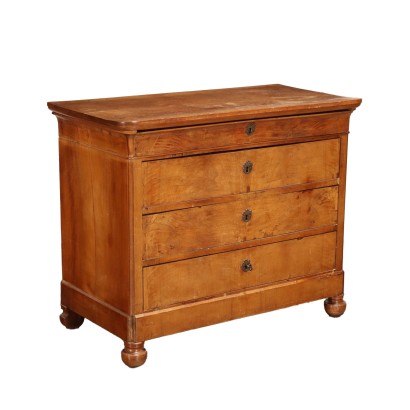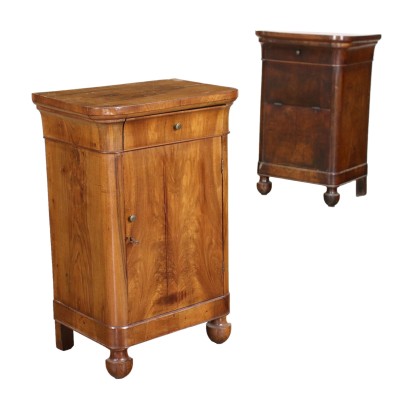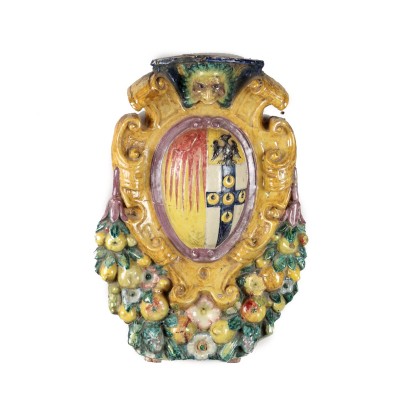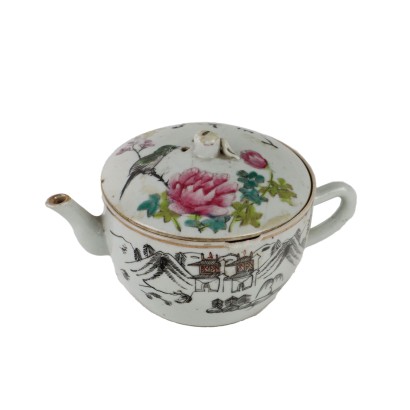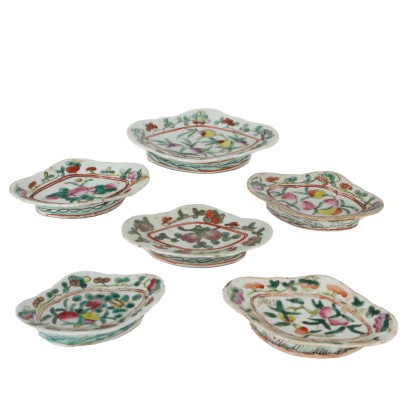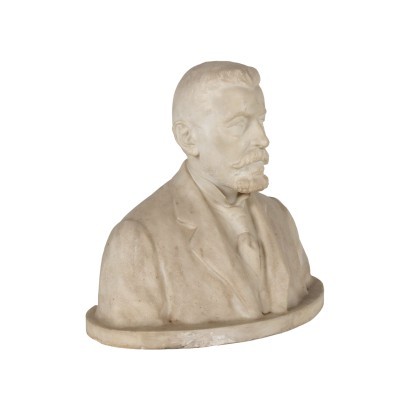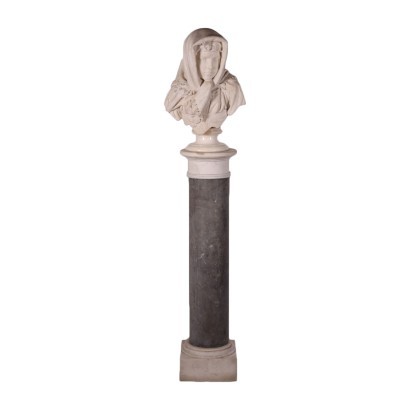Charles X Chest of Drawers Mahogany Italy XIX Century - Italy Second Fourth XIXth Century
Features
Italy Second Fourth XIXth Century
Style: Charles X (1824-1830)
Age: 19th Century / 1801 - 1900
Origin: Italy
Main essence: Mahogany , Walnut
Material: Mahogany Veneer , Mahogany Feather Banded Veneer
Description
Charles X chest of drawers in mahogany veneered walnut, Italy, second quarter of the 19th century. Front veneered in mahogany feather with 4 drawers including 1 in the band, vase feet. Restorations and shortcomings.
Product Condition:
Product that due to age and wear requires restoration and resumption of polishing.
Dimensions (cm):
Height: 87,5
Width: 108
Depth: 54,5
Additional Information
Style: Charles X (1824-1830)
Referring to a very short period, the Charles X style denomination is nonetheless significant because it allows us to detect some specific elements of the taste of the time.
nIt can be considered the last phase of the stylistic research of the Restoration, in which bourgeois requests and needs are welcomed, and opens up to a taste for the Gothic.
nCharacterized by wavy and wavy lines, which oppose the more squared ones of the Empire, it mainly uses light woods with darker threads and very few metal applications.
Age: 19th Century / 1801 - 1900
19th Century / 1801 - 1900 Main essence:
Mahogany
It is one of the most precious and sought-after woods in cabinet making. It was discovered in Central America around 1600 and began to be imported to England in the 1700s. Much appreciated for its hardness and indestructibility, it became widespread following the blocking of walnut exports from France in 1720 and the consequent elimination of English import duties on mahogany from the colonies in America and India. The most valuable version comes from Cuba, but it became very expensive. At the end of the 18th century it began to be used also in France in Louis XVI, Directory and Empire furniture, its diffusion declined starting from when Napoleon, in 1810, forbade its import. It was generally used in the manufacture of elegant furniture, due to its characteristics and beautiful grain.
Walnut
Walnut wood comes from the plant whose botanical name is juglans regia , probably originally from the East but very common in Europe. Light or dark brown in color, it is a hard wood with a beautiful grain, widely used in antique furniture. It was the main essence in Italy throughout the Renaissance and later had a good diffusion in Europe, especially in England, until the advent of mahogany. It was used for solid wood furniture and sometimes carvings and inlays, its only big limitation is that it suffers a lot from woodworm. In France it was widely used more than anything else in the provinces. In the second half of the eighteenth century its use decreased significantly because mahogany and other exotic woods were preferred. Material:
Mahogany Veneer
Mahogany Feather Banded Veneer



